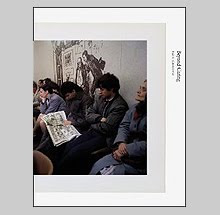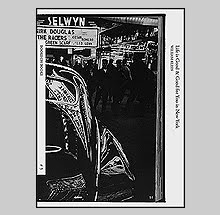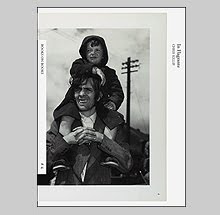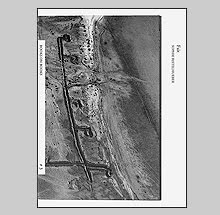Editions of Mayakovsky by Grafik Archive Publishing
In this day and age with advances in digital printing and print-on-demand technologies, it is possible to design and upload a book to a printing company’s server and have the book arrive on your doorstep a few days later. What amazes me is that the systems that create these books are so automated that they print, bind, and probably even box and ship without the book being touched by human hands.
It is easy to forget the days before computers when a book’s type was set by hand, letter by letter, and it took several days for a very small run to pass through the press. One book that I recently discovered whilst pursuing my love of Russian design is a modern title that was entirely printed using those older technologies involved in letterpress production. Book Design of the Russian Avant-Garde: Editions of Mayakovsky published by Grafik Archive Publishing in 1999 is so beautifully made that it makes me wish that it was still practical to turn off the computer and handcraft books for larger audiences.
According to the publisher Lance Barton, Editions of Mayakovsky is homage to both letterpress printing and to the extraordinary design that was challenging the limits of that technology to meet the aesthetic demands of the designers. This book reproduces 45 cover designs from Vladimir Mayakovsky’s books of poetry and plays from 1917 to 1930 including two posthumous volumes of published conversations called Mayakovsky Alive.
Mayakovsky himself designed several of his own covers to remarkable effect. Many of the other well known designs were contributed by Alexander Rodchenko and El Lissitzky. Anton Lavinsky who designed the poster for Eisenstein’s Battleship Potemkin lent his talents to a few titles as well.
Much care was given to reproducing colors in Editions of Mayakovsky that would be faithful to the original material but since 80 years has passed since these books were published, a bit of artistic license has been taken in printing to determine what the color may have looked like fresh off the Soviet presses. Regardless, it is the way the ink lays on the paper - overlapping and at times slightly off register - that adds to the enjoyment.
The cover of this book is in simple black cloth with a wrap around band with Cyrillic lettering. The body of the book uses various paper stocks ranging from thin translucent to very thick cardstock. Interestingly, the publisher chose to bind using a fukuro-toji or pouch binding construction to the individual pages. This technique was developed in the fourteenth century because older Chinese and Japanese papers were so thin that printing on both sides was not possible. In order to avoid having blank pages within those older books, printers printed consecutive pages on only one side of a long sheet of paper and then upon folding the page in half and binding on the open end, the illusion is made that the paper was printed on both sides. The letterpress similarly would not have allowed printing on both sides of the paper due to the physical impressions made when the drum of the press passes the paper over the plate and amount of ink used unless a much thicker paper stock was chosen.
For the Voice, the groundbreaking book collaboration between Mayakovsky and El Lissitzky which I have written about before is treated to a special addition of a sheet of perforated stamps showing the designs for twelve of the poems.
Grafik Archive printed 700 copies of Book Design of the Russian Avant-Garde: Editions of Mayakovsky, of which 500 were bound with wire and 200 are case bound in cloth. I have also heard that the special case bound edition comes with a clipping from one of the actual metal plates used in the printing and that the whole ordeal, if found new from the publisher, is wrapped in a letterpress poster of Mayakovsky. I found one of the case bound edition but my copy did not come with these special additional material. Then again, this only set me back $75.00 in mint condition versus the usual $200.00.
I am no technophobe, I love what is possible to achieve in design and printing using ultra-sophisticated computers and printing hardware but there is something lacking when a droplet of sweat can no longer fall directly onto the paper and leave a little reminder of the hands hovering above it. Through the impression of the letterpress, we see the physical evidence of decisions and craft - mind and hand.
Book Available Here (Editions of Mayakovsky)


































